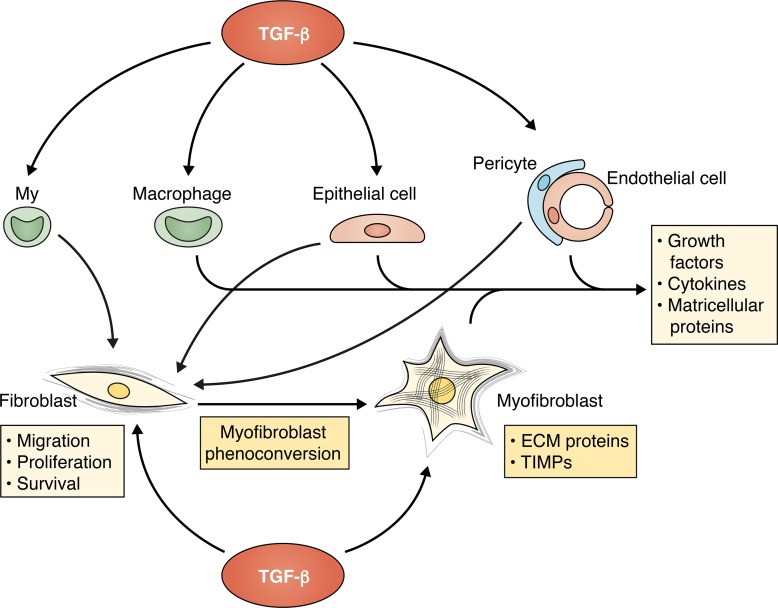Figure 2.
The cellular targets of TGF-βs in tissue fibrosis. Although resident fibroblasts are major cellular targets of TGF-βs in fibrotic conditions, some TGF-β–mediated fibrogenic effects may involve actions on other cell types, including myeloid fibroblast progenitors (My), macrophages, epithelial cells, pericytes, and endothelial cells. TGF-β is a central mediator in fibroblast-to-myofibroblast conversion and promotes a matrix-preserving phenotype, associated with secretion of ECM proteins and tissue inhibitors of metalloproteinases (TIMPs). Some studies have suggested that expansion of myofibroblasts in fibrotic tissues may also involve TGF-β–mediated conversion of circulating progenitors, epithelial cells, pericytes, and endothelial cells into fibroblasts. TGF-β may also exert indirect activating effects on fibroblasts by promoting secretion of fibrogenic cytokines, growth factors, and matricellular proteins by macrophages, vascular cells, and epithelial cells.

